Sangiovese (san-jo-vay-zeh) is the undisputed king of red wines in central Italy, virtually present in every area of the country Thanks to its many clones and surprising versatility, Sangiovese can create a wide range of wines: from young and fresh Chiantis to complex and full-bodied Brunellos.
Primary Flavors
Violet
Liquorice
Forest berries
Black cherry
Grape Profile
TANNIN: Noticeably Firm, Structured
ACIDITY: High Acidity, Tangy and Crisp
BODY: Rich, Smooth, and Layered
SUGAR: Completely Dry, No Residual Sugar
LEVEL OF ALCOHOL: Fairly Strong (12-14%)
Handling
Serve 16-18°C
Decant 1 hours
Glass Type Standard Balloon Glass
Period open2-3 days
Cellar Between 2 and 3 Years
Our Top selection
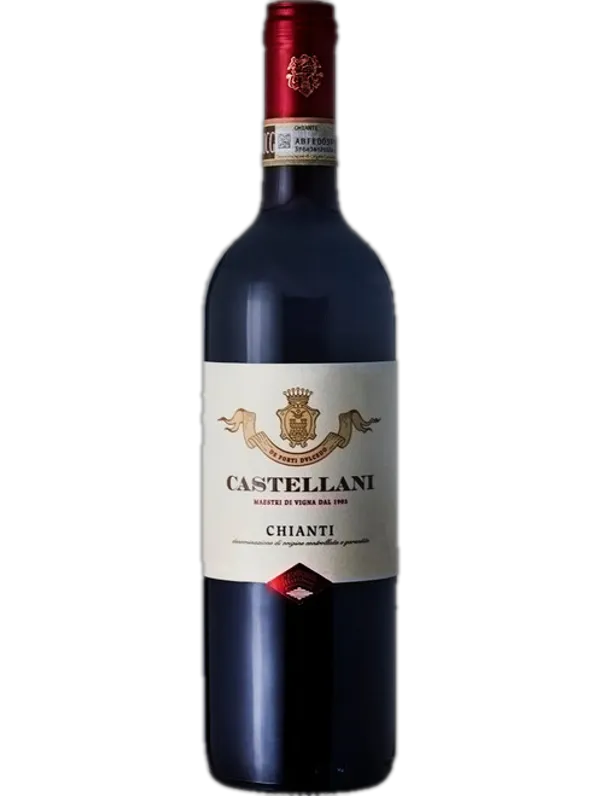
Chianti DOCG
Dry and balanced, this Chianti presents intense fruity aromas laced with violets and a cherry hint. Its light tannins evolve into velvety softness on the palate.
Read more
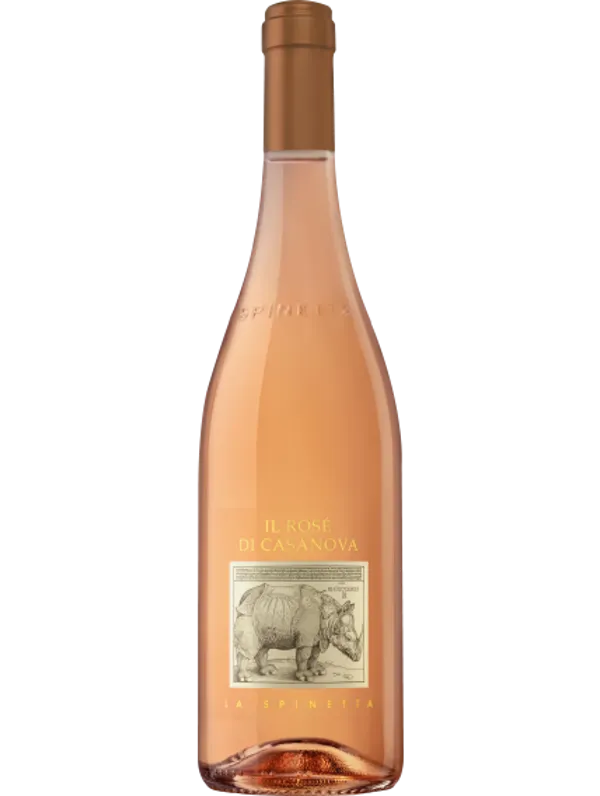
La Spinetta Il Rose di Casanova
Can cellar up to four years. Rivetti family heritage, inspired by Provence pinks but with Italian Sangiovese and Prugnolo Gentile. Citrus and berry notes, fresh palate, light-bodied, pure finish.
Read more
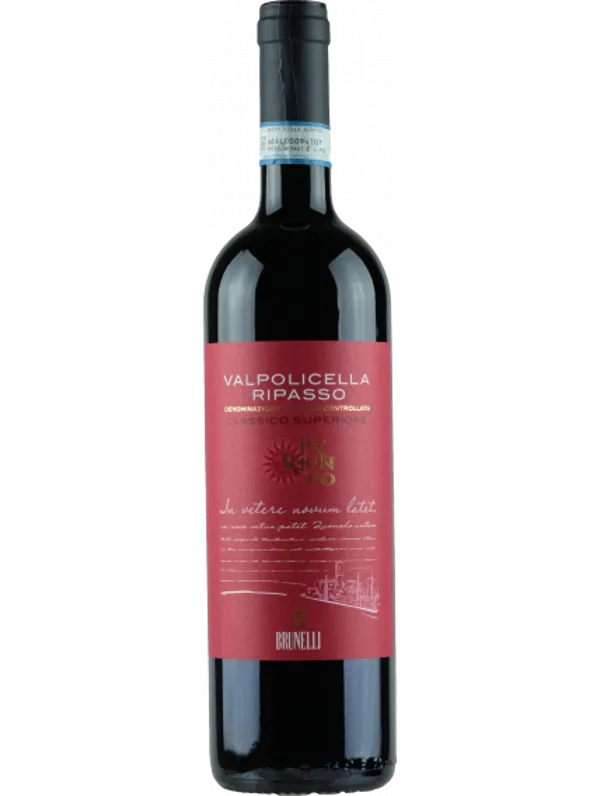
Brunelli Ripasso Pariondo
Cellar up to 5 years. Decant for 1 hour. Estate run since 1936, now by Alberto Brunelli and parents. Uses Ripasso method with Amarone skins. Oak-matured. Notes of cherry, blackberry jam, spice, chocolate. Pairs with carpaccio or herby roast beef.
Read more
Sangiovese IGT Rubicone
Unpretentious 2022 table red. Ideal for easy-drinking, best paired with pizza or pasta.
Read more
Sangiovese Regions
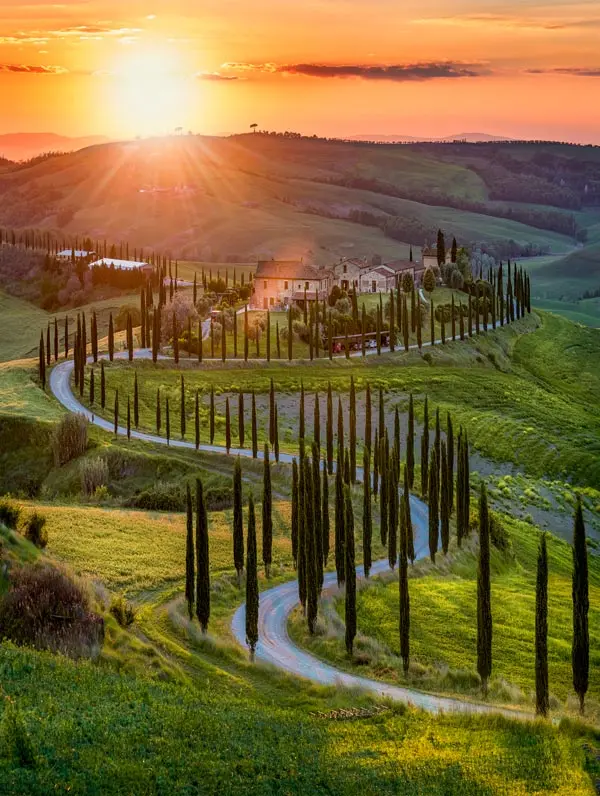
Tuscany
One sip of historic Tuscan wine and you’ll feel as though you’re amongst the vines.
Read more
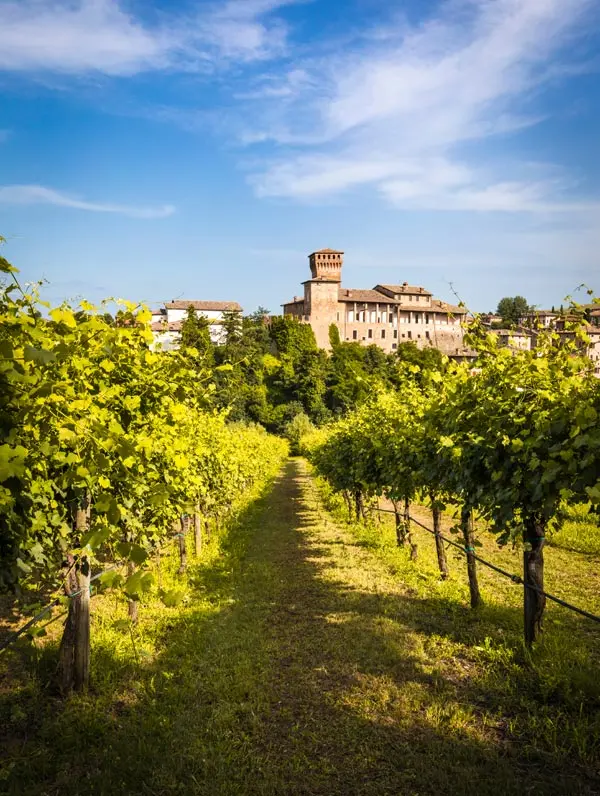
Emilia Romagna
Emilia Romagna is famous for its great cuisine, organic wines and vast wine varieties.
Read more
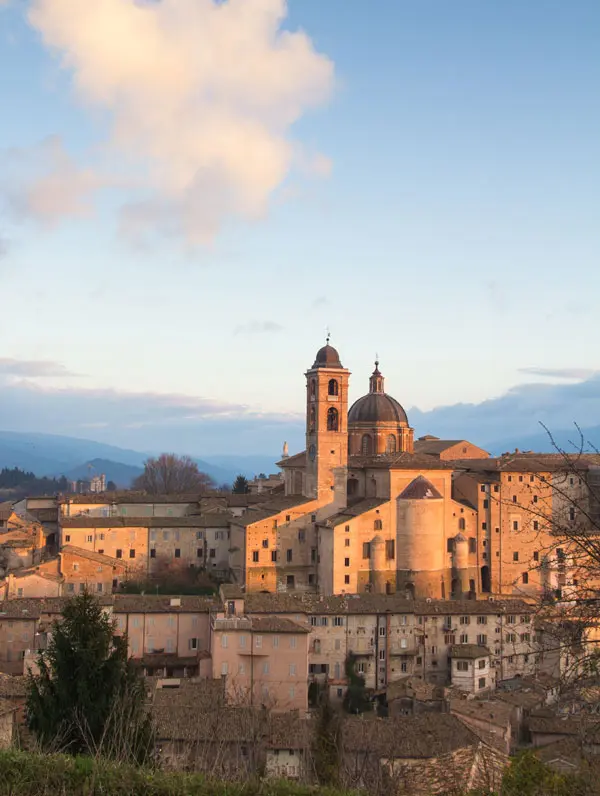
Marche
Marche has beautiful landscapes and authentic homemade food as well as great wine.
Read more
Food Parings

Starter: Vegetable soup
There are plenty of variants for this hearty dish. Try the typical `Ribollita` from Tuscany with Sangiovese di Romagna

Main course: Lasagna bolognese
The most iconic Italian dish, Lasagna & Chianti is a match made in heaven.

Second course: Wild boar stew
A classic Tuscan recipe, a traditional winter dish often served with polenta. Open a good bottle of Brunello or Vino Nobile.
With its versatility, Sangiovese offers myriads of mouth-watering food pairings.
Young Chiantis are great with lasagna or pasta bolognese, meatballs and grilled meats. Brunellos or Vino Nobile express the best in terms of structure and aromas when they are matched by richer preparations, such as wild boar, game stews and braised meat. In case you fancy having fish, open a lighter and fresher Sangiovese di Romagna.
Sweet wines made from Sangiovese are great with ‘Cantucci’ (special biscotti from Tuscany), and thanks to their body, they can be a wonderful match for chocolate desserts.
FAQS
What kind of wine is Sangiovese?
Sangiovese is a red grape variety that shows an eclectic character and can produce relatively light, medium or full bodied wines with good acidity.
What does Sangiovese taste like?
Wines made from Sangiovese grapes tend to have a good structure, with a round and rich taste, and an intense aftertaste. Harmonious with a good tannic backbone, dry and with high acidity that leaves a bitter aftertaste, these wines show flavours of red fruit and peculiar violet notes.
Is Sangiovese dry or sweet?
Most of the wines produced from Sangiovese grapes are dry, but the grape is also capable of producing amazing sweet nectars such as the Vin Santo Occhio di Pernice.
Where is Sangiovese produced?
Sangiovese is prevalent in Tuscany but has found his second home in Emilia Romagna. The reality is that Sangiovese is cultivated a bit all over Italy, with higher concentrations in the central regions. You can also find Sangiovese produced in the United States and Australia.
What should I eat with Sangiovese?
A bit of everything: from first courses made of pasta with meaty sauces to fish soups; from grilled steaks to roasts and braised game. Depending on the style and the area of production, Sangiovese wines can match many different preparations, including ethnic cuisine.
How do you pronounce Sangiovese?
The pronunciation of "Sangiovese" using the International Phonetic Alphabet (IPA) would be [san.dʒoˈveː.se]. Breaking it down, it sounds like "san-jo-VAY-seh".
Are Sangiovese and Chianti the same?
No, Sangiovese and Chianti are not the same. Sangiovese is a type of red grape variety that is widely planted in Italy. Chianti, on the other hand, is a wine that comes from the Chianti region in Tuscany and, while it is primarily made from the Sangiovese grape, it can also include other grape varieties.
Do you serve Sangiovese chilled?
Sangiovese, like most red wines, is typically served at what is termed 'cellar temperature', which is around 60-65°F (16-18°C). It is not served chilled like white wines or rosé, but if it's a particularly hot day or the wine is showing a lot of tannins, a slight chill can make it more refreshing and can soften the astringency.
Can Chianti be 100% Sangiovese?
Yes, Chianti can be made from 100% Sangiovese grapes, although it is not required. Chianti DOCG rules allow for a Chianti wine to have 70-100% Sangiovese, and the remainder can be made up of other red grapes, such as Canaiolo, Colorino, Cabernet Sauvignon, or Merlot.
Want to know it all?
Sangiovese Primary Flavours
Sangiovese, a grape as expressive as it is cherished, takes one's palate on an exploratory jaunt through a dense orchard. Picture, if you will, the succulent burst of black cherries, each bite a melody of tart and sweet that sings of summer's zenith.
Black Cherry
Forest Berries
Violet
Liquorice
Now, meld that with the composite harmony of forest berries— a mélange of blackberries, raspberries, and wild strawberries — that harks to the untamed bramble and bush. This berry ensemble is grounded by the earthy whisper of violets, their fragrance threading through the berry richness like a delicate silk ribbon.
To complete this sensory tapestry, a hint of liquorice weaves in, adding an enigmatic, bittersweet finale that lingers longer than a late sunset on a British summer evening. The Sangiovese grape, in its vinous form, truly captures a spectrum of flavors that could grace any table from Brighton to Inverness, complementing both the hearty and the genteel of dishes.
Savouring Sangiovese: A Guide to Enjoyment and Preservation
The art of enjoying a Sangiovese, a revered variety known for its starring role in Chianti and other esteemed Italian reds, begins with service at a cozy 16-18°C – the perfect temperature to unravel its bouquet and complex flavours.
Serving temperature:
17-20°CGlass type:
Balloon glassSuggested time in decanter:
1 hourLasting period once open:
2-3 daysStoring time in the cellar:
2-3 years for the young Chiantis, decades for the Brunellos and Vino Nobile di Montepulciano
In Britain, where a good red is often the centrepiece of a dinner party, a balloon glass serves as the ideal vessel, allowing the wine's aromas to dance and concentrate, enhancing the tasting experience. Before the first pour, a sojourn of about one hour in a decanter allows the Sangiovese to stretch its legs, breathing life into its robust character.
Once uncorked, the Sangiovese remains vibrant for a leisurely 2-3 days, provided it's kept in a cool place, making it a forgiving choice for sipping over a weekend. As for those with a cellar to boast of, young Chianti variants nestle comfortably for 2-3 years; meanwhile, the more ambitious Brunellos and Vino Nobile di Montepulciano wines promise a tapestry of evolving flavours over decades.
For British enthusiasts who relish a well-stocked cellar and the pleasure of anticipation, laying down a bottle of Sangiovese becomes a toast to patience and the finer things in life.
Consumer info
Celebrated for its versatility and depth, Sangiovese has captivated UK wine lovers who cherish a robust and aromatic profile in their glasses.
Price Averages in the UK
Sangiovese presents a broad spectrum of price points, reflecting its diverse expressions. Typically, you can find enjoyable bottles ranging from £10 to £30, with prestigious labels from renowned appellations like Brunello di Montalcino climbing higher in cost.
Pasta Pairing
The high acidity and cherry notes of Sangiovese make it particularly well-suited for tomato-based pasta dishes. A plate of spaghetti bolognese or penne arrabbiata will find a faithful companion in this wine.
Risotto & Rice Pairing
A Sangiovese with its savoury character elevates risotto dishes, particularly those with mushrooms or a rich tomato sauce.
Meat Pairing
The wine’s tannic structure and affinity for herbs make it a perfect match for red meats. A juicy steak or a slow-cooked lamb shank seasoned with rosemary can be transformative when paired with Sangiovese.
Fish Pairing
While not a traditional pairing, a lighter Sangiovese can accompany richer fish dishes, such as salmon or tuna steak, where the wine’s acidity cuts through the fattiness beautifully.
Cheese Pairing
Aged cheeses, from a sharp pecorino to a mature cheddar, pair exquisitely with Sangiovese, with the wine’s complexity complementing the depth of the cheese.
Top 3 Cuisines
Sangiovese is a heroic partner to Italian cuisine, naturally, but it also stands up splendidly to the robust flavours of Argentine asados or even the spiced nuances of Moroccan dishes, celebrating the global appeal of this adaptable grape.
Incorporating Sangiovese into your wine repertoire is an invitation to explore a range of culinary delights, promising to elevate the dining experience with its harmonious and richly layered character.
Wines made from Sangiovese
SANGIOVESE DI ROMAGNA
An exuberant Sangiovese, with a delicate fragrance reminiscent of red fruits and violet. Gently tannic and with a pleasantly bitter aftertaste. Drink it young.
CHIANTI
A great beginner Sangiovese Sangiovese. Fruity, dry and gently tannic. As time passes, it becomes increasingly velvety.
CHIANTI CLASSICO
The “Classico” label refers to Chianti wines which are made from at least 80% Sangiovese grapes and within a defined area (around Florence and Siena).
CHIANTI RISERVA
It can be labelled “Riserva” if it has been aged for at least 2 years in barrel, plus an additional three months in bottle.
BRUNELLO DI MONTALCINO
Top quality wine, from the Sangiovese Grosso clone. Persistent and ethereal with hints of wild berries, sweet spices and aromatic wood. Full bodied, vigorous and racy.
History of Sangiovese
The Sangiovese grape has been known since 1500, but its origin is most likely Etruscan. In particular, it seems to come from the area north of the Tiber and south of the Arno, from which it then spread beyond the Apennines, up to Emilia Romagna.
The origin of its name is uncertain. Some argue that it derives from "Sangiovannese" which relates to the village of San Giovanni Valdarno, while others argue that it derives from "sanguegiovese" ( Italian for "blood of Jupiter"), referring to Monte Giove, near Santarcangelo di Romagn
Final overview
Thanks to its chameleon character and its undisputed charm, Sangiovese has conquered all kinds of palates from all over the world, becoming the red flagship wine of Italy. While largely grown in Italy, you can also find Sangiovese from the United States, Australia, France and Argentina. In Italy, you will find it is often labelled by its regional name. Chances are, any red wine produced in Tuscany, Campania, and Umbria will be Sangiovese.
